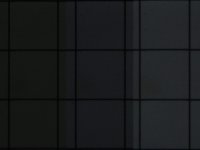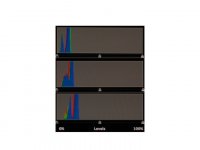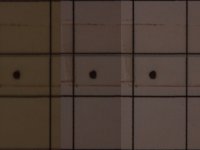brocknroller
porromaniac

I'm doubtful that the allbinos light transmission measurements are completely reliable. Notice, for instance, that according to their measurements the Nikon 8x32 with the highest transmission is not the SE or the EDG, but the LX-L. That's the one with silver prism coating and 18 glass surfaces.
I'm also doubtful about the accuracy of Brock's low light observations of the SE and EII. A 32mm objective has a light gathering area about 13.8% larger than a 30mm objective. If the eye is open wide enough to accept the full exit pupil of the larger objective, then 13.8% more light will enter the eye from the 32mm binocular, if the light transmission of the two binoculars is equal. Even if we use the 87% low point of the allbino's transmission curve for the SE, the EII would need to transmit 100.8% of the light that falls on the objective just to equal the brightness of the SE in low light.
Finally, I have to agree with Rick that light transmission that is still state of the art was first achieved about 25 years ago in certain Fujinon and Nikon Porro prism binoculars. Other companies and roof prism binoculars played catch up for a long time, but still haven't significantly surpassed the light transmission of Fujinon EBC coatings and similar Nikon coatings of the mid 1980's.
Henry,
I should know better than quote allbinos' with you lurking in these forums, shouldn't I?
If I hadn't seen the difference with my own eyes, I would have doubted it too so I don't blame you for being skeptical. Too bad I still don't have the SE, I would have sent it to you with my EII to compare yourself.
The difference in brightness btwn the 505 8x32 SE sample and the 501 8x30 EII sample wasn't splitting hairs, it was easily discernible.
Even my neighbor who is a birder but not an optics junkie noticed the difference. I handed her the EII and the SE and asked her, which do you think is brighter. She went back and forth a couple times and said the EII. It was a dim, overcast day.
I've learned from my "hands on" experience with bins over the years that what works out on "paper" doesn't always work in actual use. Why this is, I don't know. Part could be due to sample variation. My current 8x EII is definitely better than my first sample.
However, as far as I could tell, there was nothing abnormal about the SE. No fogging, no fungus, no significant dirt on the lenses, no missing coatings (like there was on the 10x42 HG I bought), no occluded exit pupils, nothing I could find that would account for the difference in brightness with the EII due to sample variation.
Also keep in mind that you have an early model SE (500) and the light curve may be different than the 505 model, which has different coatings. My 501 held up better against the EII. If there's any credence to allbino's 8x SE light curve, it's not the total light transmission that makes the difference, but the parts of the spectrum where that transmission is boosted and lowered.
You make a good point about allbinos' transmission number for the 10x HGL, which they list as 91% and the 10x EDG as 88.5%. I don't know how many glass surfaces the EDG has, but you would expect the AR coatings to be at least as good and the dielectric prism coatings to boost transmission above the silver coated HGL's.
However, Allbinos claims that "The transmission value [for the 10x42 HGL], measured by us, coincide almost perfectly within the margin of error with the data provided by the manufacturer. Again results that vary from what you would expect. I think your nitpick here would be that "margin of error".
The HGL's apparent brightness is high, and as I mentioned, the brightness overwhelms details on brightly lit objects. Allbinos doesn't give a light transmission curve for that bin, but it might be that it trumps the 8x32 SE in the 450nm to 600nm range, which led them to say about the 10x42 HGL:
"Good coatings really do a fantastic job ...We are really impressed!
In any case, there you have two opinions that coincide about the brightness of the 8x32 SE, one an amateur's and the other "experts," and it's no surprise that you don't accept either one since the "numbers don't add up". Although, I'm surprised you didn't include your own observations with your SE and EII. Not the same coatings, but at least I would have respected that more having the "accuracy" of my observations being "doubted" on calculations alone.
The results are not what I had expected either, but I didn't make my observations casually. I made them over a year's time under different lighting conditions, and the results were always the same.
Just reporting what I saw. Two eyeballs, two bins. YMMV.
Brock







